The 28 Best Documentaries of 2023
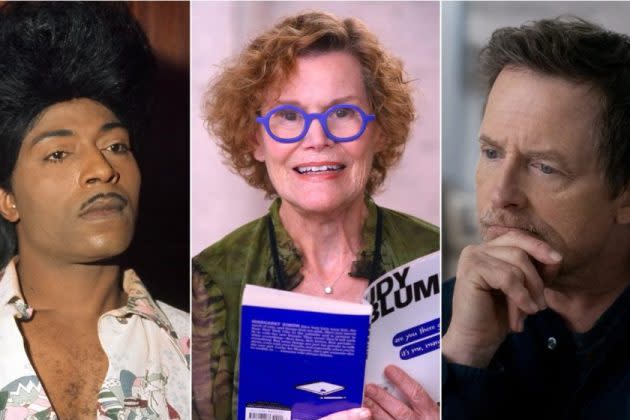
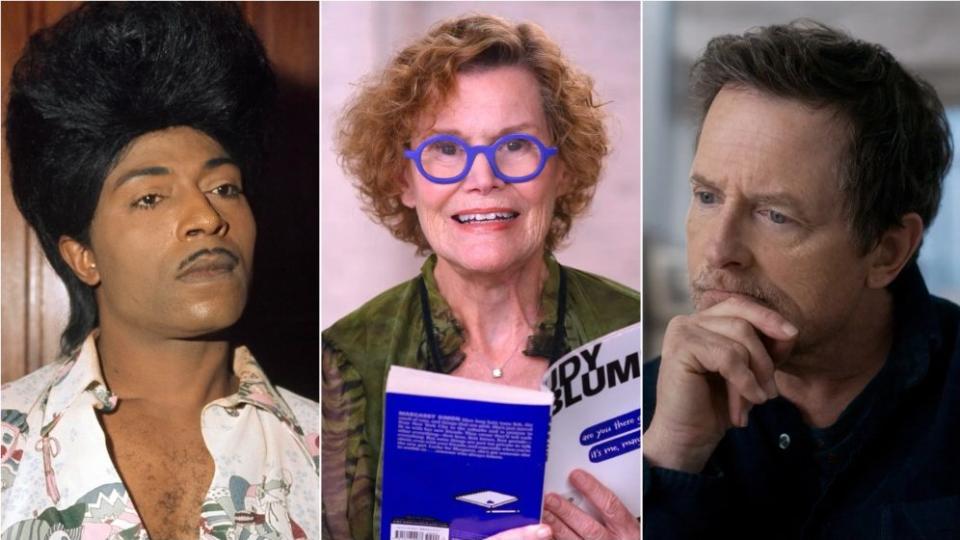
Here’s a brief history of documentary moviegoing.
More from Variety
In the 1960s, the documentary as we know it was being invented, but hardly anyone saw them. In the ’70s and ’80s, a new generation of masters — Barbara Kopple, Ken Burns, Errol Morris, Claude Lanzmann — came to the fore, and mainstream audiences began to take notice. In the ’90s, people at film festivals starting saying things like, “The documentaries are the best part!” And now?
We think of each of the films on this list as a kind of moviegoing adventure. Today, the sheer range of nonfiction film — the subjects, the styles, the voices — is extraordinary in its reach. Does that mean that we’re in a renaissance era? You might say that. But you could also say that when it comes to this form of filmmaking, the art of reality knows no season.
To see Variety’s collection of the best films of 2023, read here.
American Symphony

In Matthew Heineman’s lovely portrait of an artist and a marriage, Jon Batiste, with his inner light that doesn’t seem to have an off switch, comes across as the most ebullient performer in all of popular music. Yet he’s dealing with grim stuff behind the grin. His wife, Suleika Jaouad, is waging a war against recurring leukemia, and Batiste is having his own skirmishes with anxiety and panic attacks related to her illness, even as he’s making headlines as the surprise Grammy hoarder of 2022. “American Symphony” gets into some of the lesser battles Batiste is facing, like resentment from the classical world as he prepares the film’s title work for its world premiere at Carnegie Hall. The movie’s ultimate inconclusiveness feels like a feature, not a flaw: Music is forever, and so is chemo, in some cases. Holding those elements in balance is one way to create a symphony. —Chris Willman
Anselm
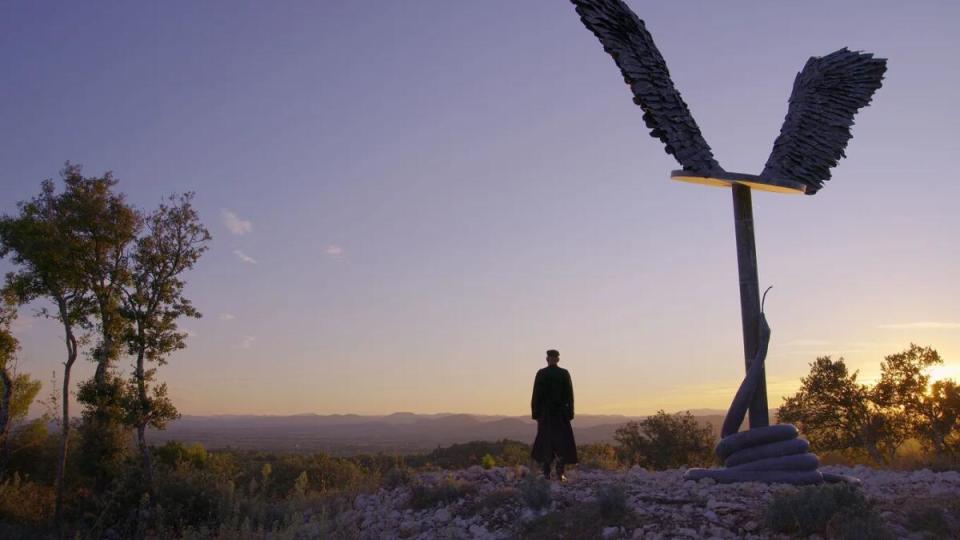
Not enough directors have capitalized on the ability of 3D to convey a sense of physical depth; fewer still have seized on the possibility of adding philosophical depth. Thank goodness, then, for Wim Wenders, whose tour-de-force 3D 6K portrait of the artist Anselm Kiefer is both rich in ideas and breathtaking in technical execution. We see Kiefer using flamethrowers to torch and distress his materials, and we experience the brutal beauty of molten metal destroying the surfaces Kiefer ladles it onto. The stereoscopy and sharp focus push our noses into the physical texture of the work, while also pulling us forward and backwards through time. Time is the film’s fourth dimension, as it presents each of Kiefer’s past selves overlapping, sometimes literally, with the images functioning as both eye and mind’s eye. —Catherine Bray
Beyond Utopia
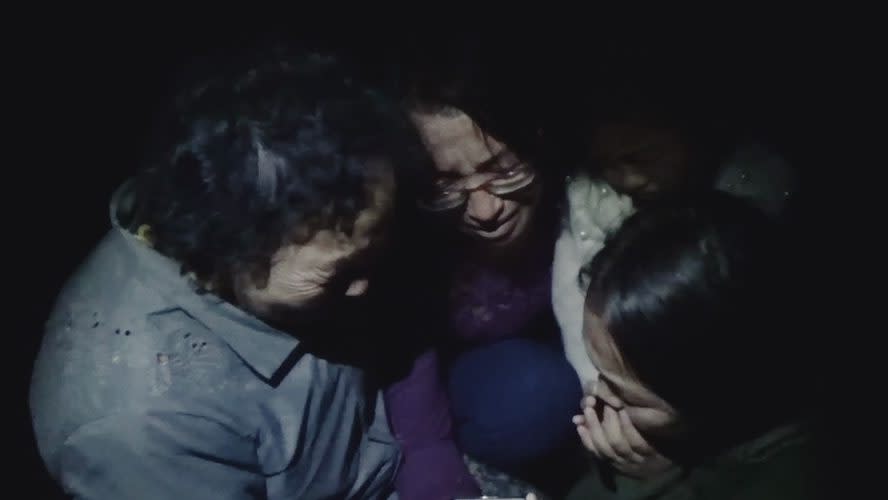
As you watch Madeleine Gavin’s staggering film, which is about what really goes on in North Korea, and about a handful of desperate souls who attempt to defect from there, you see life inside the totalitarian cult state — the full nightmare of the place — as never before. The filmmaker got ahold of forbidden footage that was smuggled out of the country. She uses it to make the case that North Korea is a place of such relentless terror that the only country it’s comparable to is Nazi Germany. But the film also chronicles, with footage shot on a cell phone, the attempt by five members of a family to leave this bad dream of a nation, and their escape story has a scary, suck-in-your-breath suspense. In recent years, North Korea’s nuclear weapons, with the mobster-autocrat Kim Jong Un in charge, have seized our attention. What we’ve forgotten about for too long is the North Korean people. For years, their misery has existed under a blackout. “Beyond Utopia” looks behind the wall and shines a light. —Owen Gleiberman
Bobi Wine: The People’s President
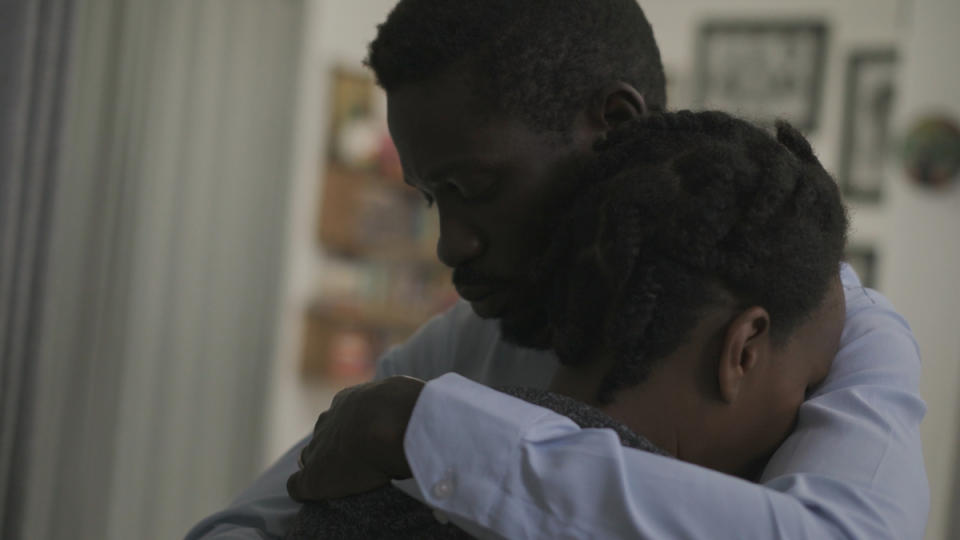
The political activism of pop stars is, as a rule, on the restrained side. Yet for Ugandan singer Robert Kyagulanyi Ssentamu — better known to his adoring fans as Bobi Wine — there’s both everything and nothing to lose by getting more involved in national politics than most celebrities would dare. Entering a presidential election against corrupt, long-ruling incumbent Yoweri Museveni is, he knows, both a folly and a necessary stand to take in a country still reeling from the brutal military dictatorship of Idi Amin in the 1970s. Christopher Sharp and Moses Bwayo’s punchy, plainspoken film documents his journey with angry urgency and bitter gallows humor. At moments, the movie startles you with its immediacy, not least of all in the moving, spontaneous scenes of Wine’s young children grappling with his absence. — Guy Lodge
The Disappearance of Shere Hite
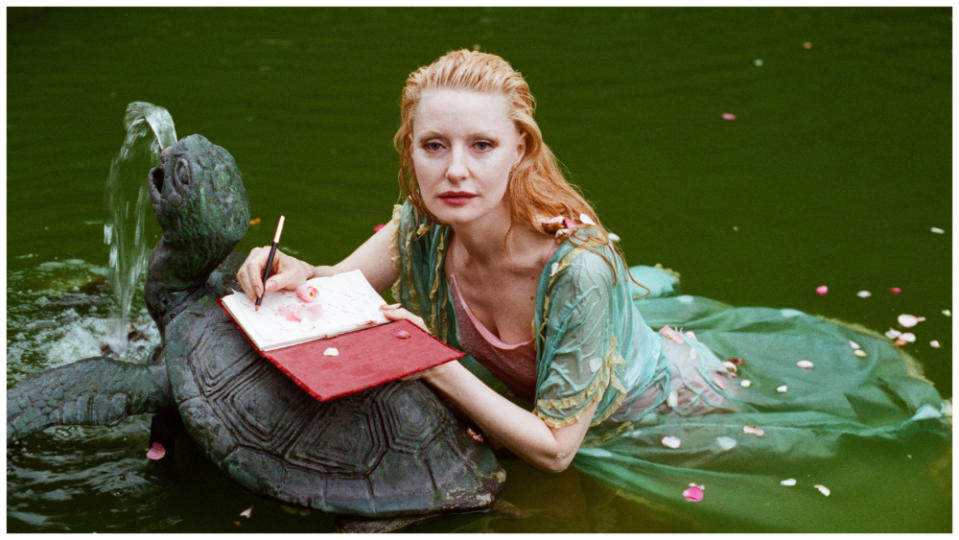
Nicole Newnham’s astonishing documentary is about who Shere Hite was — and about why we even have to ask. It‘s a beautifully made corrective to the amnesia that for decades surrounded Hite, the author of “The Hite Report,” a landmark 1976 survey on female sexuality that is still ranked as the 30th best-selling book in history. A former model with a gorgeous cloud of strawberry blonde hair, Hite had a casual, soft-spoken way of deploying words like “clitoris,” “penetration” and “masturbation” that, back then, seemed to make everyone uncomfortable but her. The film is put together with such visual verve that even its most prickly passages are compulsively enjoyable. But to what extent have we been gaslit into excising Hite’s place in feminist history? It’s hard to definitively say, though by the end of Newnham’s film we are unlikely ever to forget her again. —Jessica Kiang
The Eternal Memory
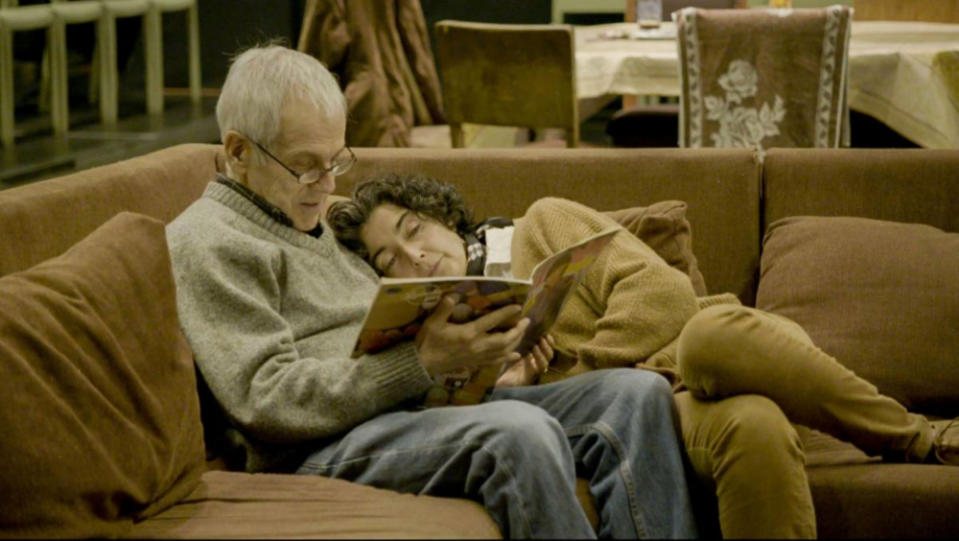
Dementia and neurodegenerative disease have been extensively portrayed onscreen. But Maite Alberdi’s film treats inexorably sad material with a lighter, more lyrical approach than most, focusing less on the day-to-day ravages of living with Alzheimer’s than on the slippery, transient concept of memory itself. Key to the film’s thesis is that its subject is Augusto Góngora, a veteran Chilean political journalist who labored through the 1970s and ’80s to bring the iniquities of the Pinochet regime to public consciousness, and later dedicated himself to conserving that national memory for future generations. Yet it’s the simple love story between Gongóra and his devoted wife and carer, former Chilean cultural minister Pauline Urrutia, that gives Alberdi’s film its spine and heart. The film is a powerful reminder of how our best efforts to keep and curate memories — for ourselves and others — can be thwarted by time. —GL
Four Daughters
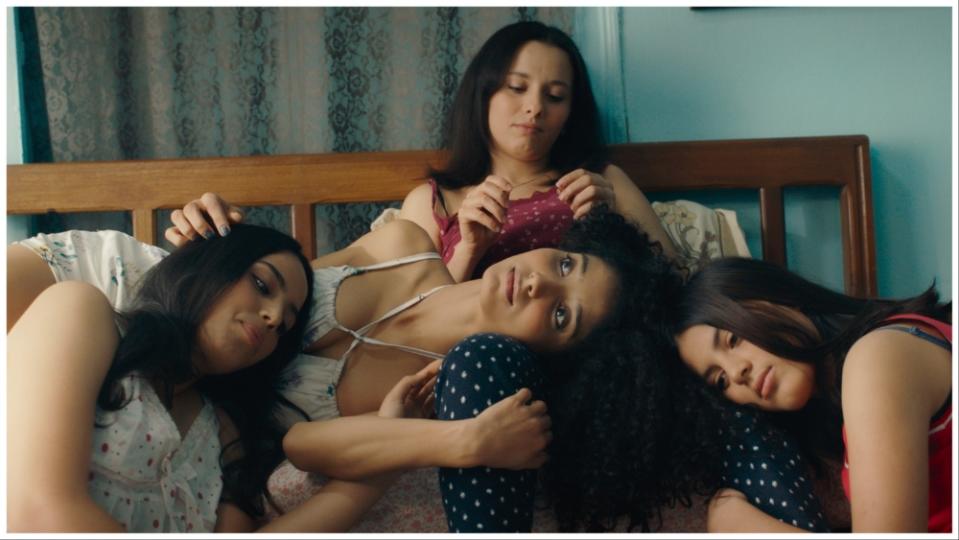
Kaouther Ben Hania’s gripping true story of a Tunisian mother whose two elder daughters joined ISIS is overlaid with fictional, self-analyzing elements. The real Olfa Hamrouni appears throughout the film, but she’s also played by the Egyptian-Tunisian star Hend Sabri. Were Olfa’s daughters, 16 and 15 at the time of their disappearance, eaten up by their overprotective mother, or were they consumed by the predatory wolves of religious fundamentalism, cultural indoctrination and ISIS itself? The film may operate better on a scene-to-scene basis than as a holistic narrative, yet its effect is cathartic — for the way it reveals Olfa as both sympathetic and repellent, charming and chilling — and also because we’re so unused to seeing this experimental an approach applied to the daily struggles of Arab women in a majority-Islamic North African country. The elliptical strategy of “Four Daughters” is to uncover some truths and leave others veiled. —JK
Going to Mars: The Nikki Giovanni Project
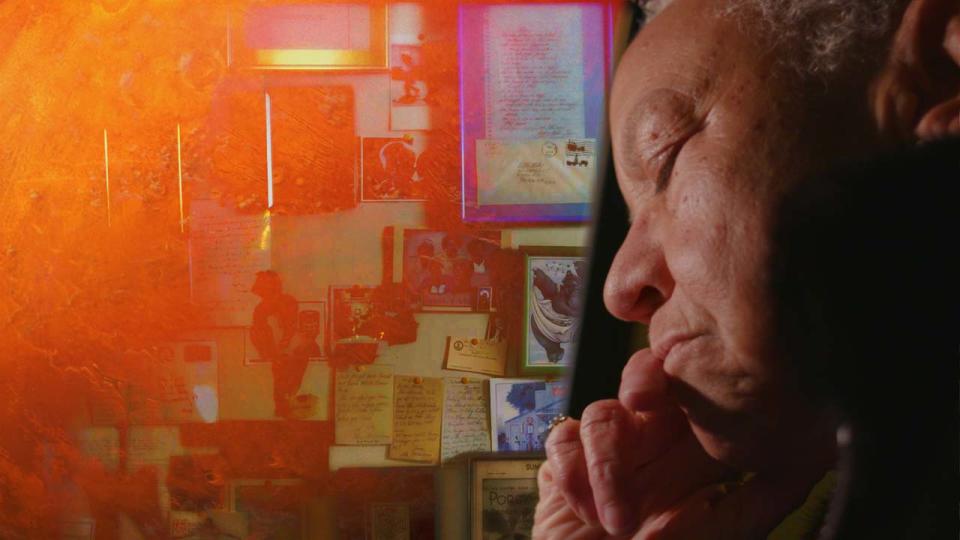
The title teases galactic possibilities and plays with the concept of the unfinished work. One of the luminaries of the Black Arts Movement of the 1960s into the 1970s, the now 79-year-old poet Nikki Giovanni continues to address the pain and joy, the anger and resilience of the descendants of the Middle Passage, who know much about uncertain and dangerous journeys. Michèle Stephenson and Joe Brewster’s beautifully crafted film takes us on an adventure, responding creatively to the call of its ingenious subject by touching on themes of aging, ailing and the oppressions with which she’s still reckoning. The filmmakers exhibit a soulful grasp of Giovanni’s poetry (voiced in the doc by executive producer Taraji P. Henson), but they also honor the untidy realities of the writer herself. —Lisa Kennedy
De Humani Corporis Fabrica

It’s been nearly 30 years since the global franchise of Body Worlds exhibitions — collections of dissected and plastinated human cadavers — racked up ticket sales. That sense of revelation is recalled, without the circus-sideshow dimension, in Véréna Paravel and Lucien Castaing-Taylor’s extraordinary documentary, which delves dizzyingly beneath the flesh to show organs, systems and actions that we know are inside us but tend to keep tidily out of mind. The movie takes us into the living, heaving, breathing body, using microscopes, ultrasounds and endoscopic and scialytic cameras to present its inner workings as vividly as any nonfiction film has managed. There’s a psychedelic spell to the imagery that suggests a state-of-the-art “Fantastic Voyage,” except that there’s no fantasy here: Every body probed is a real-life patient at once of several Parisian hospitals, their lives hanging in the balance as we gawk at their insides. —GL
In the Court of the Crimson King

Can a band that seems to operate under rigidly precise conditions still produce music that sparks spontaneous ecstasy in listeners? The question might not seem unusual if it were a classical ensemble we were talking about, or the ballet. But Toby Amies’ film is about King Crimson and its natty genius of a leader, Robert Fripp, who’s as tough a taskmaster as anyone in the so-called finer arts. Amies gets the eight current members of the group on-camera, but he also goes back and interviews what we might think of as disgruntled ex-employees (notably Adrian Belew). It’s up to you whether you identify more with the many players who couldn’t hack the stress and got out or the ones who decided it was worth the high expectations and frayed nerves to remain in the court of prog-rock’s most enduring royalty. Fripp, almost always clad in a formal vest and necktie, is the ultimate English gentleman whose willingness to suffer fools even half-gladly is often being tested, not least by the filmmakers he commissioned to make this document. —CW
Judy Blume Forever
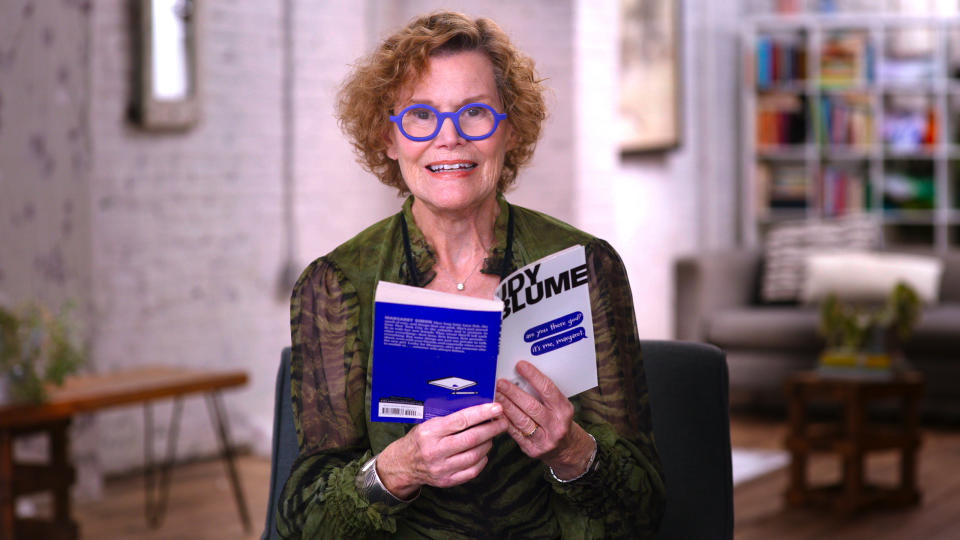
In Davina Pardo and Leah Wolchok’s Crayola-bright documentary, the author Judy Blume is as sparky as ever in her mid-80s — and she has a game storytelling presence. The film encapsulates the trailblazing, still-rare appeal of her work, which presents adolescent social and sexual insecurities with both the uncanny recall of a child’s in-the-moment perspective and the reassuring wisdom of a grown-up who’s been through it all. “Come for the female masturbation, stay for the empowerment,” quips one interviewee. Yet anyone imagining Blume as a righteous, bra-burning feminist of the era may be surprised by the doc’s touching portrait of a young woman caught between demure domesticity and itching rebellion, her calling to write driven by the more repressed aspects of her upbringing in postwar suburban New Jersey. “Judy Blume Forever” is a study of one woman finding herself through the liberties of storytelling, though it’s also lent a stirring dimension by its focus on Blume’s work as an ardent correspondent to legions of fans. —GL
Kokomo City
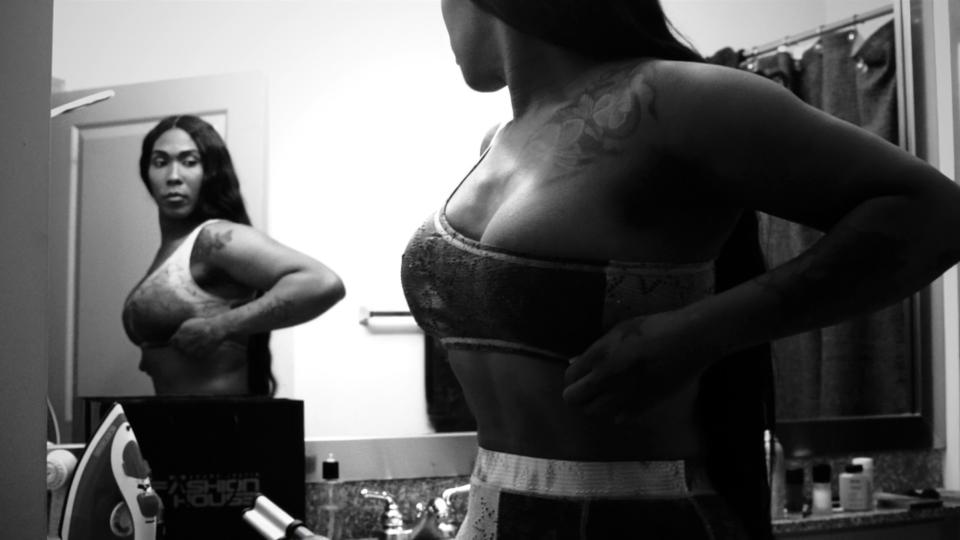
The title doesn’t refer to a real place. It’s more like a state of mind, invented by director D. Smith, who is Black and trans, to describe the space that her sisters occupy in the world. Theirs is an identity that is barely understood by the public and frequently misrepresented by the media, but is here defined by a handful of tell-it-like-it-is trans sex workers who offer snappy, whip-smart insights into their lives, dreams and the down-low dudes who adore them. In Smith’s unforgettable, format-defying, micro-budget doc, the t-girls spill the tea, totally reframing the conversation, opening up about the stuff that more mainstream trans-empowerment movies tell us should be off-limits, like their bodies and what they do in the bedroom. Smith’s subjects aren’t afraid to offend, but they’re irreverently eloquent in their assessment of how the world works, dishing on everything from image culture to what one of them, Daniella Carter, sees as the hypocrisy of her fellow Black people — one of the film’s key themes: “We all scream the narrative that we oppressed … but we’re the first motherfuckers to turn our nose up to the next person who wants to stand out and be different.” —Peter Debruge
Lakota Nation vs. United States
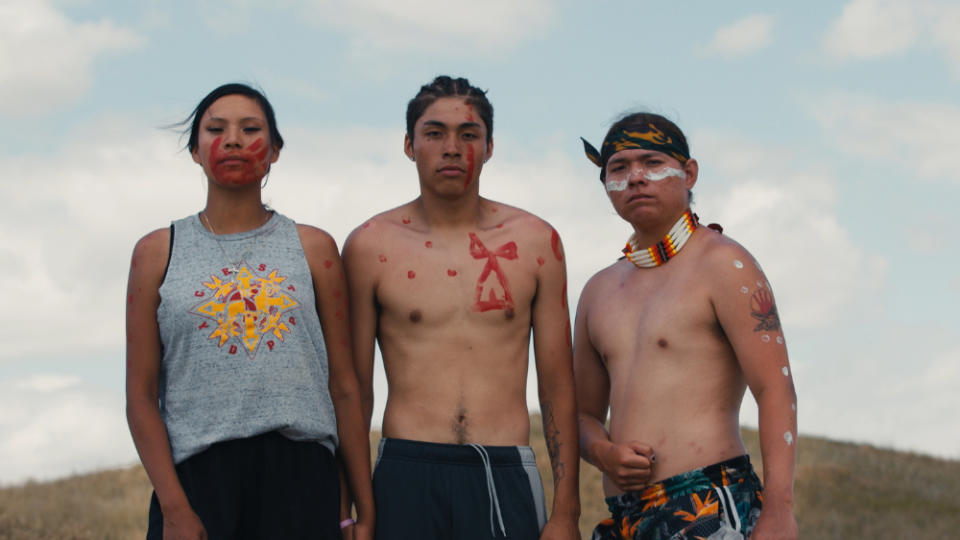
Jesse Short Bull and Laura Tomaselli’s unprecedented Native-issues essay film puts the question of Land Rights front and center in a lucid and uplifting way. Central among the film’s concerns are promises made, and later broken, by the United States in the peace treaty of Fort Laramie, which established the Great Sioux Reservation in 1868. The film explains how those 60 million acres were then taken away, how guns were confiscated and buffalo killed to force Natives into a European-style farming system, how Indigenous religions were outlawed and children were sent away to be Christianized in boarding schools. It also deconstructs how mainstream American media otherized the Natives, making “invasion look like self-defense.” Solutions don’t come easy when attempting to rectify decades of dehumanization and erasure, but “Lakota Nation” offers a clear-eyed look at some of the murkiest corners of American history. —PD
Little Richard: I Am Everything
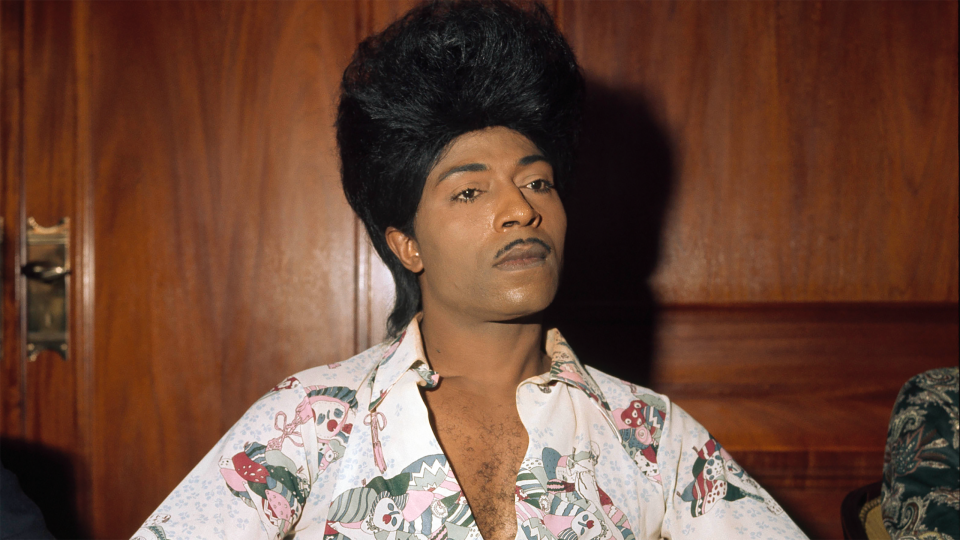
The enthralling documentary that Little Richard deserves. Lisa Cortes’s movie understands, from the inside out, what a great and transgressive artist he was, how his starburst brilliance shifted the whole energy of the culture — but also how the radical nature of what he did, from almost the moment it happened, got shoved under the rug of the official narrative of rock ‘n’ roll. The documentary uses stunning archival footage to channel the electricity of Little Richard, and the eruptive glory of his volcanic gospel-on-amphetamines music still hits you like a revolution. Yet the movie also takes a deep dive into how Little Richard, a Black queer man who was not about to conceal who he was, intertwined the very DNA of rock ‘n’ roll with the perverse power of his identity. His story becomes the stirring and, in some ways, tragic tale of an artist so ahead of his time that even his own life couldn’t catch up with how he’d changed the world. —OG
Menus-Plaisirs — Les Troisgros

It’s the quiet that strikes you in Frederick Wiseman’s languidly mesmerizing 240-minute documentary about one the world’s greatest restaurants. The film is a rejoinder to every image of cacophonous haute cuisine environments — clattering pans, hissing steam, chefs screaming invective — that’s been fed to us by “Hell’s Kitchen”-style reality shows and the propulsive drama of “The Bear.” The masters and staff of Le Bois Sans Feuilles, a three Michelin-star establishment in France’s Loire region, work with a hushed intensity of concentration. And that suits Wiseman, who explores every dimension of this culinary cathedral from the inside out. The astonishing plates on display resist “food porn” categorization, and it’s the human element of the restaurant that most interests Wiseman: a family business with a tradition of gastronomic innovation, here found at a compelling tipping point between father and son. —GL
Milli Vanilli
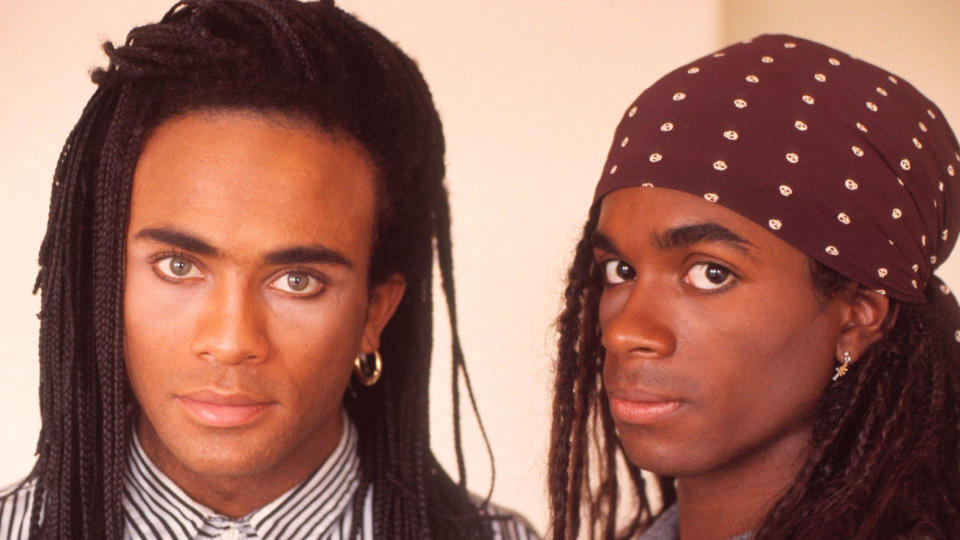
It’s one of the inside-out realities of our era that scandal, if you give it enough time, turns into myth. So it is with Milli Vanilli, the German-French R&B pop duo of the late ’80s and ’90s who, having sold close to 50 million records, were revealed to be a fake: a pair of lip-syncing Euro pretty boys who hadn’t sung a note on any of their hits or at any of their concerts. Luke Korem’s captivating and surprisingly moving documentary adds another, richer layer to the saga. It tells the Milli Vanilli story from the point-of-view of Rob Pilatus and Fabrice Morvan themselves — especially, Fab, who unveiled himself to the filmmaker (Rob died in Los Angeles in 1998). We see how they started, why they struck their “deal with the devil,” and who, exactly, the devil was. Were they complicit in a deception that was sleazy and greedy? Yes. But by the end of the movie, a wide circle of influence has been implicated: the Svengali who pulled the strings, a music industry full of people who saw through the ruse yet rationalized it away, and, in a sense, the public itself. There’s no way that we could have known, yet the movie captures how the myth of Milli Vanilli now touches on the pathology of image-making that’s at the very core of pop music. —OG
The Mission

The world will never know what was going through 26-year-old Christian missionary John Allen Chau’s head when he was shot and killed by arrows off the coast of North Sentinel Island. Was he an evangelical martyr-hero who answered God’s calling and gave his life trying to convert a remote and hostile tribe? Or was he an arrogant and unprepared American, brainwashed by the church into undertaking a suicide mission? The filmmakers, Jesse Moss and Amanda McBaine, reconstruct his story à la Herzog’s “Grizzly Man,” creating a haunting meditation on the very nature of missionary work. “The Mission” becomes a kind of philosophical quest in which wild ambition goes hand in hand with folly at the very limits of so-called civilization. —PD
Money Shot: The Pornhub Story

It’s not a movie about the cultural prominence or significance of porn in our time, though it does touch on key aspects of how pornography today is manufactured and consumed. Instead, Suzanne Hillinger’s documentary mostly tells the story of how Pornhub, the largest porn site in the world, became a lightning rod of controversy when it was accused of being a place that abetted sex trafficking and the sexual abuse of children. You’d think there wouldn’t be two sides to that issue. But “Money Shot,” in chronicling the war against Pornhub as led by activists like Laila Mickelwait and journalists like Nicholas Kristof of The New York Times, reveals what it means when porn evolves into a corporate entity. The film captures the ambiguity of the real Pornhub revolution, which is that every viewer of pornography is now viewed as a consumer. The dark message of the film is that in the no-boundaries world of the web, you can police a company like Pornhub but you can’t make what it’s selling go away. —OG
Nam June Paik: Moon Is the Oldest TV
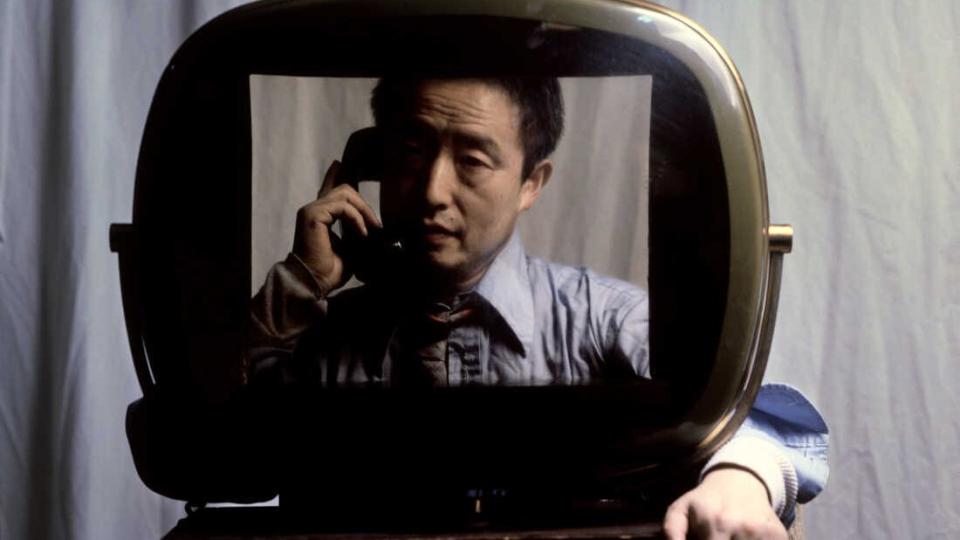
There are a lot of people who know the name Nam June Paik, or even got to experience one or more of his video installations, yet still don’t know very much about him. Amanda Kim’s gorgeously crafted documentary does a splendid job of filling in what a visionary figure Paik was — the way he interfaced with people like John Cage, lived for years as a starving artist in New York and built his surrealist TV museum exhibits from the ground up, literally inventing an art form. Paik’s art had a let’s-try-it-on spirit that was cosmic but playful, and the opposite of pretentious. After all, he was creating high art… on television! And what’s most intoxicating about the film is that it becomes a supreme vehicle for experiencing the psychedelic majesty of Paik’s creations, which were driven by his obsession with finding the hidden soul of technology. In “Moon Is the Oldest TV,” Paik, who died in 2006, emerges as a figure both impish and daunting — the artist as explorer of uncharted terrain, with an almost mystical connection to the arsenal of electronic media he wielded like a plugged-in paintbrush. —OG
Orlando, My Political Biography
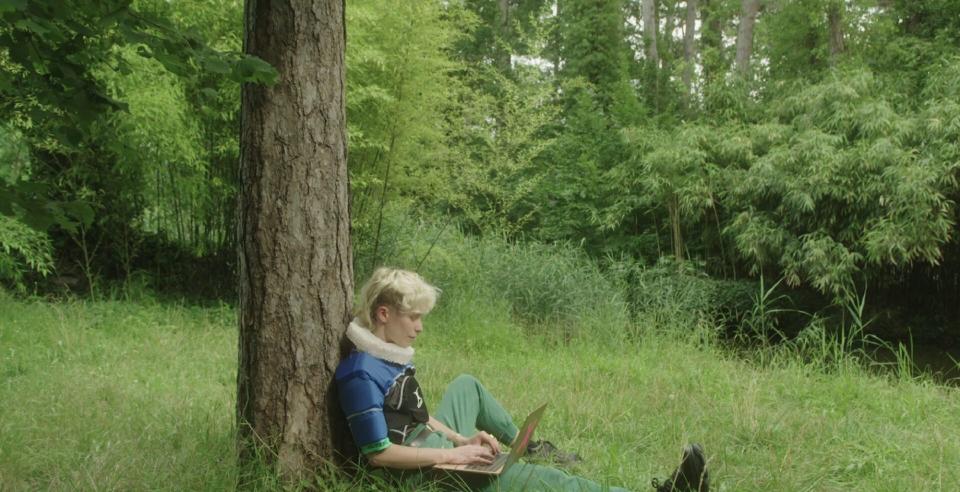
Virginia Woolf’s “Orlando: A Biography” is a centuries-spanning tale of a nobleman who, after a slumber of several nights, metamorphoses into a woman. And Paul B. Preciado’s docu-manifesto is an ode to the many Orlandos who walk the world. Playful, urgent and brilliantly innovative, the film is predicated on the notion that if society is a set and gender a performance, what better way to capture that than to revel in the very constructed nature of filmmaking? The movie’s aesthetic creates a trans cinematic archive that reaches back to images of Christine Jorgensen, Marsha P. Johnson and Sylvia Rivera — all to tell a mosaic of a collective story. —Manuel Betancourt
Our Body

The London-born French filmmaker Claire Simon has amassed a body of work somewhat comparable to that of the American master Frederick Wiseman. Her latest outing, luxuriant in length but never less than eye-opening, immerses us in the interactions between female patients of all ages and the medical professionals in a French hospital, with typically compassionate and insightful results. Typical, that is, until Simon herself unexpectedly becomes one of her own subjects. Her personal journey is sketched in roughly the same number of scenes she dedicates to anyone else’s, so that she becomes one more strand in the film’s breathing, sometimes bleeding tapestry: just one of “Our Body’s” vital organs. What happens in the course of the film is sometimes tragic, often painful, but it is always instructive — demystifying and de-objectifying the female body, still the locus of so much secrecy and mystery. —JK
The Plains

Australian filmmaker David Easteal’s first feature is a striking docu-hybrid filmed almost exclusively inside a car during the peak-hour commute. The movie places viewers in the back seat to observe a middle-aged Melbourne lawyer, Andrew Rakowski, during his drive home from work over the course of a year. It’s remarkable how fresh and spontaneous the result feels. As we listen in on Rakowski’s phone conversations with his wife or his in-car chats with the filmmaker, a picture emerges of a man who is traveling long distances but feels like his life momentum has stalled. And yet the movie achieves the feat of making three hours fly by. —Richard Kuipers
Radical Wolfe
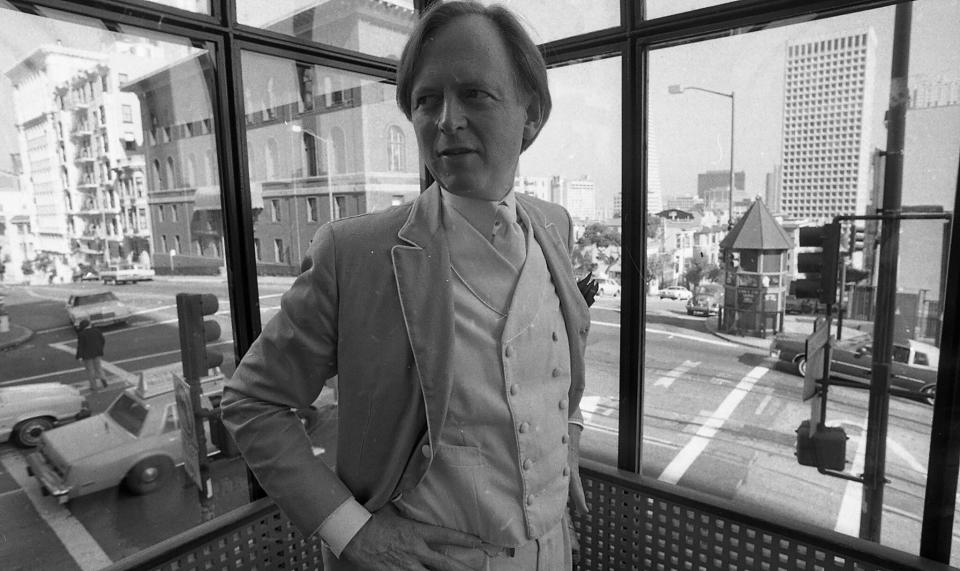
It was Tom Wolfe, more than anyone, who taught journalism to dance. Richard Dewey’s impeccably chiseled portrait, the story of how he did it, and the heights he rose to, makes for an irresistible watch. The tale of how Wolfe’s celebrated style came into being — the exclamation points!! The spontaneous but knowing word salad!! — is one for the ages, and the documentary tells it exquisitely. It also does a memorable job of exploring his strategy and achievement in writing “Radical Chic,” the New York magazine cover story in which he spent 20,000 words describing a party thrown by Leonard Bernstein and his wife, Felicia, at their Park Avenue apartment to raise funds for the Black Panthers. (It’s as if Wolfe defined the concept of bourgeois political correctness and disemboweled it in the same moment.) The documentary is full of photographs and film footage of Wolfe, and we see how vital his floppy-haired-ironic-Southern-gentleman look was to the whole Wolfe mystique — the white suits that made him seem like he’d arrived from another planet. Yet Tom Wolfe was hipper than the hipsters, with feelers that allowed him to see all, and in 76 highly entertaining minutes “Radical Wolfe” packs in more or less everything you need to know about him. —OG
Smoke Sauna Sisterhood
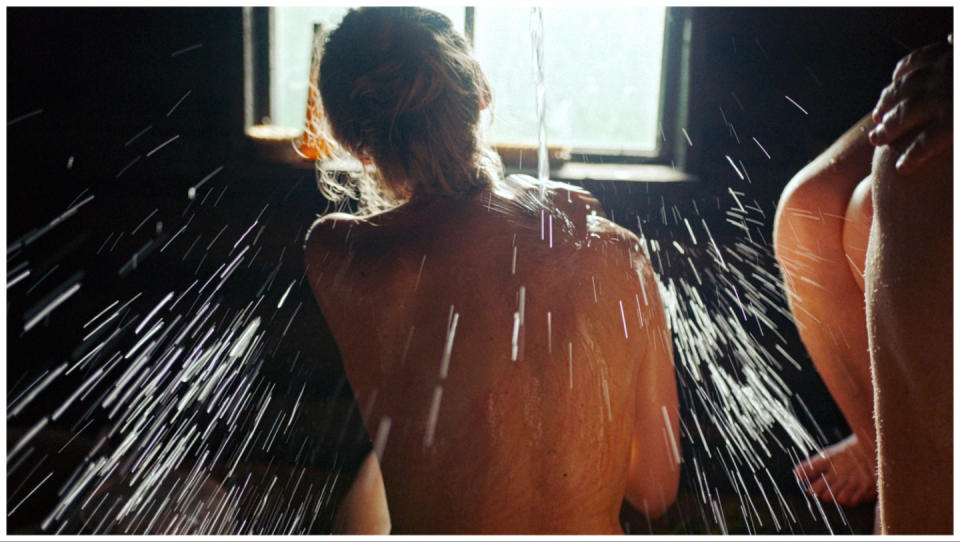
In Estonia, in a log-cabin sauna nestled in a pretty woods by a lake, a group of women gather on and off through the changing seasons to sweat out their secrets and heal each other with heat, talk and arcane sauna-based rituals. The small smoky miracle of the movie is that it creates something so intangible, so lyrical, from the absolutely elemental: fire, wood, water and lots of naked female flesh. We don’t necessarily get to know the women as individuals, despite how intimate and sometimes harrowing their shared stories are. Instead, the director, Anna Hints, lets their soft chatter narrate a kind of choral experience of modern womanhood, operating on the most practical yet optimistic of assumptions: that with the application of enough heat and fellowship, everything painful can be soothed and everything dirty can be made clean. —JK
Squaring the Circle: The Story of Hipgnosis
Anton Corbijn’s documentary about Hipgnosis, the legendary 1970s album-cover design team, is full of great stories about how pop music’s most indelible visual form arrived at all that unforgettably strange imagery. Only Hipgnosis could shoot a photo of a cow against a blue sky, put it on a Pink Floyd cover (“Atom Heart Mother”), and make it look like an act of mysterious profundity on a level with the works of Magritte. The two main creatives of Hipgnosis were the late Storm Thorgerson, the prickly visionary of the pair, and Aubrey “Po” Powell, the long-suffering partner who oversaw the execution of Thorgerson’s insane ideas. “Squaring the Circle” is nothing if not a testament to absurdly high record-company budgets in the ’70s, which couldn’t all be spent on analog tape and blow. The movie doesn’t ask what transpired after the story abruptly ends, amid financial ruin and changing tastes in 1982. But it’s clear that Corbijn, well-known for his own album design work, is a true believer, just like all of us who grew up in a golden age of album art and lament that it was the pictures that got smaller. —CW
Still: A Michael J. Fox Movie
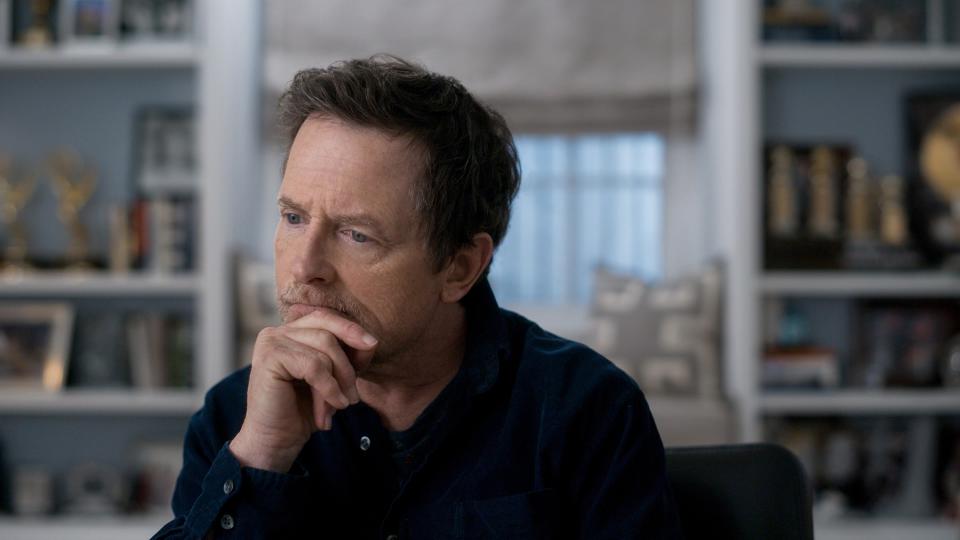
It’s a lot funnier and more entertaining than you might think. Michael J. Fox tells his own story in “Still,” which director Davis Guggenheim treats as “a Michael J. Fox movie” by remixing clips from the Emmy-winning actor’s career with cleverly restaged scenes from his private life. The “Family Ties” and “Back to the Future” star was one of the most beloved personalities of the 1980s, and though his personal story has been overshadowed by his struggle with Parkinson’s disease (diagnosed when he was just 29), Guggenheim’s upbeat, ultra-polished documentary reminds us what a peppy and relatable actor Fox was — and is. The film presents him as a trouper, focusing on how he fought to hide his symptoms for years, burying himself in his work so as not to face his handicap head-on. Today, Fox is a good sport, cracking jokes about his tremors. And looking back, he always made it look easy, coming across as laidback and cool even while secretly stressed. He never wanted to be the poster boy for Parkinson’s, but if Michael J. Fox could sell Pepsi to a generation, he realized it was within his power to raise awareness of the disease he’d been dealt. —PD
32 Sounds
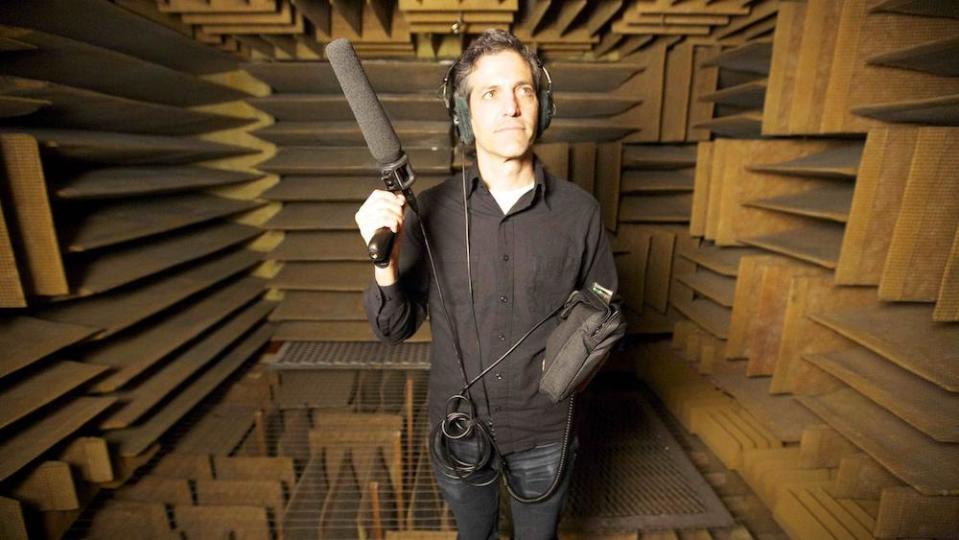
Sam Green has crafted a documentary the likes of which you’ve never heard before. Meant to be watched with headphones, this unique, immersive, audio-driven essay film invites audiences to reconsider their relationship to sound: how it works, what it can do and the way that specific noises can unlock memories or spark entirely new ones. The director investigates the source of certain sounds (like a tree falling in the forest), though he’s generally more interested in how we receive them, literally and emotionally. The film has an uncanny quality, yet it wouldn’t be as rewarding if not for its human subjects, such as the experimental musician Annea Lockwood, who once set a piano on fire to hear how it would sound, or Nehanda Abiodun, an African American revolutionary, holed up in Cuba, for whom the 1979 disco song “Ain’t No Stoppin’ Us Now” opens a wormhole of memory. —PD
20 Days in Mariupol

Offering a refresher in outrage on Ukraine’s behalf, Mstyslav Chernov’s bleak but essential film is a nerve-jangling piece of on-the-ground combat reportage. It’s built around a team of Associated Press correspondents who traveled to the port city of Mariupol on Feb. 24, 2022, the day Vladimir Putin launched the war. They assumed that this key city, just 30 miles from the enemy border, would be an early objective — the hunch was correct. Within hours, the bombs began to fall; the documentary is a strikingly immediate record of citizens under siege. The grotesque injustice of the situation is reinforced by our periodically hearing Russian leaders’ flat denials that civilians are being targeted, even as we spend 90 minutes witnessing apartment buildings, hospitals, and more reduced to charred ruins. There’s no sermonizing, just a punishingly up-close look at the toll of modern warfare on a population. “What did we do to deserve this? What are these people guilty of?” a mother asks — questions to which there can be no answer. —Dennis Harvey
Best of Variety


